





Head/TMJ: Assessment of Form and Function
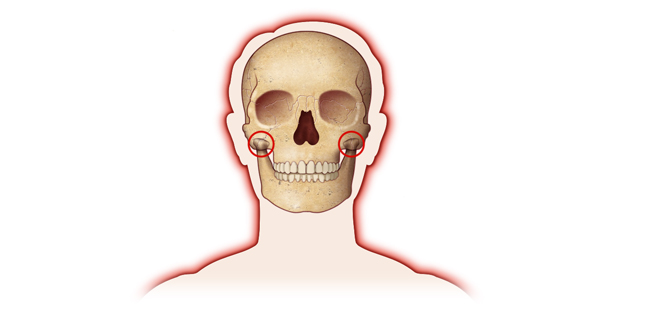
Part 2: Joint Sounds and Joint Movement (JVA, EMG, EGN)
Joint Vibration Analysis (JVA)
Joint sounds (also called vibrations) may emanate from the right and/or left temporomandibular joints and are measured in integrals. An integral is the amount of energy in a vibration. Table 1 depicts the total integral measured during a recording of 263.5 integral in the left TMJ and 237.4 integral in the right TMJ.
Integral measurement above 20 indicates a potential disc displacement within the TMJ. Joint Vibration Analysis cannot be used alone in determining disc displacement. CBCTs and MRIs are appropriate for determining joint relationships and disc function. Oftentimes integral measurements below 20 are found in patients with long term disc displacement and severe degenerative joint disease (DJD.)
Table 1: JVA Recording without Orthotic
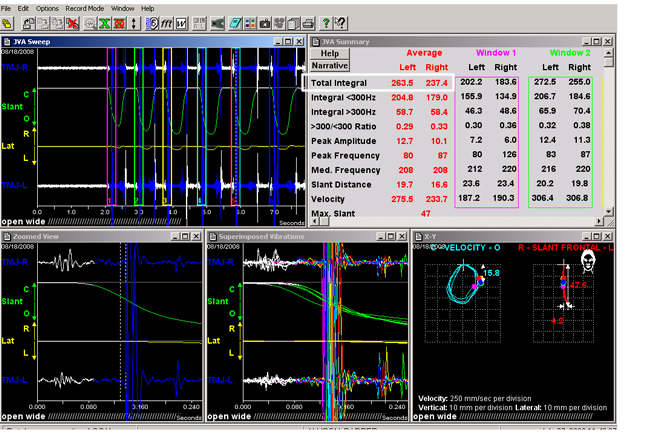
Table 2 demonstrates a reduction of joint sound measurements from 263.5 on the left to 20.5, and 237.4 on the right to 12.8, after the insertion of an intra-oral orthotic. The orthotic provides the patient orthopedic support and improved function within the TMJ.
Table 2: JVA Recording with Orthotic
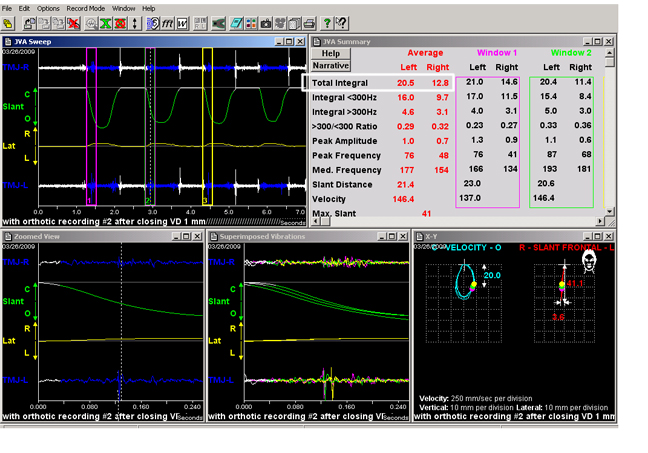
Electromyography (EMG)
Electromyography (EMG) recording of the craniomandibular muscles before, during and after placement of an intra-oral orthotic is used to verify a patient's complaint of muscle strain. The EMG recording below (lower left) depicts raw data of a patient during jaw "rest" (teeth slightly apart). The EMG recording (lower right) shows raw data of the patient's clenching (clench, release, clench, release..)
Muscle function activity is monitored and evaluated for strength, symmetry, firing time, and function during rest, swallow, clenching, chewing.
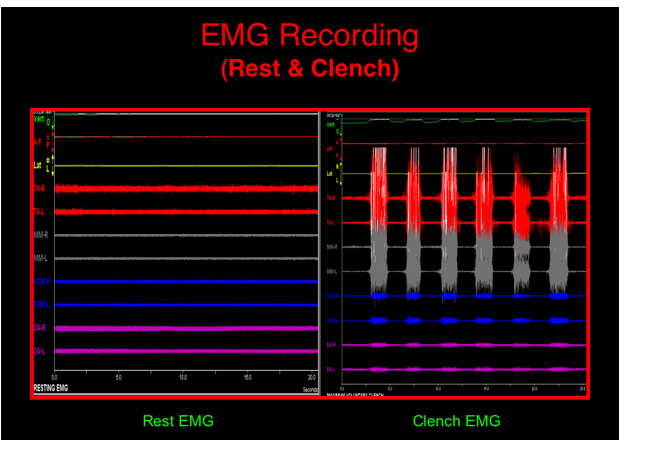
Electrognathography (EGN)
Electrognathography (EGN) recordings below were taken on three different patients and illustrate three different characteristic jaw movement patterns during jaw depression and elevation (opening and closing).
Joint, muscle and dental relationships all play a role in a patient's pattern of jaw movement.
EGN Recordings
Opening and Closing Mouth
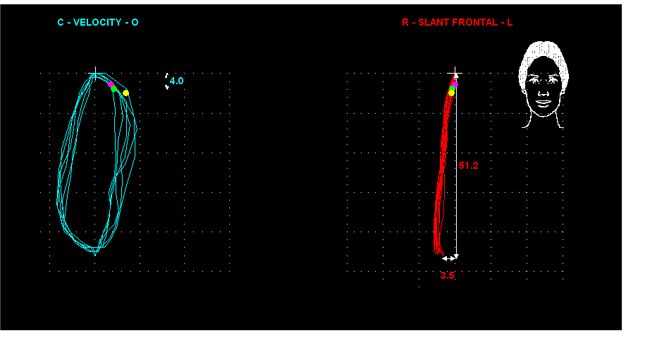
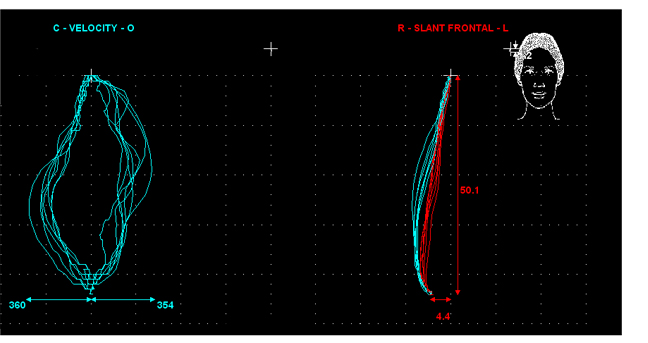
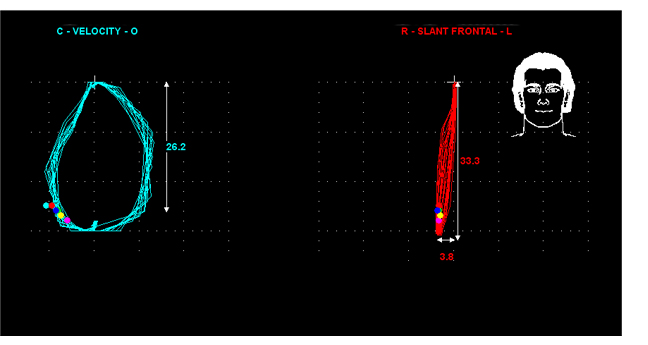

Relationships: Teeth / Muscles / TM Joints
Seemingly effortless movements of the body are the result of numerous complex physiologic mechanisms. Inter-relationships among these systems provide the basis for function. Therefore, when dysfunction, degeneration and/or disease are present, the systems contributing to locomotion of the body demonstrate mal-adaptations and inefficiencies. Diagnosis is the assessment of these integrated processes and functions. All aspects of human physiology including the cranio-mandibular-cervical systems are subject to these influences.
Pre- and Post-Treatment Cephalometric Comparisons
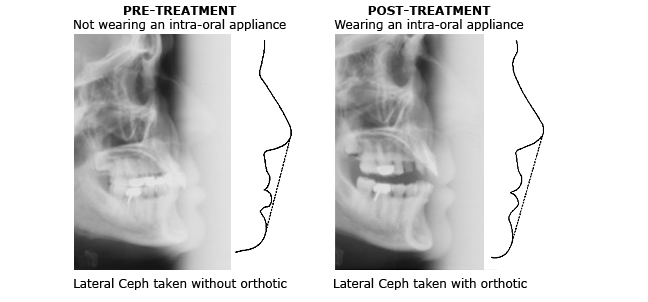
All text and images by Duane C. McKay, DDS
To view the full presentation, Click Here.